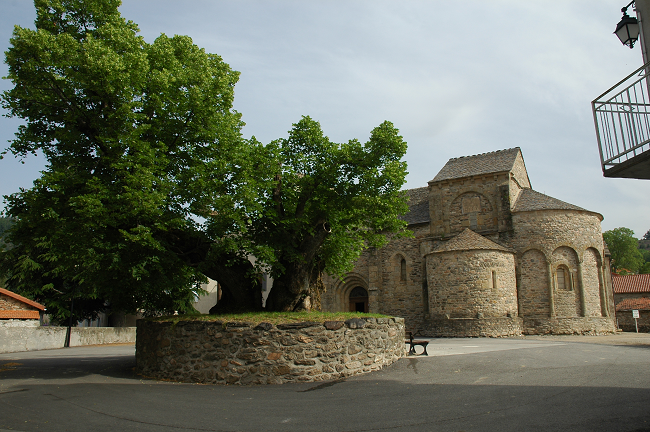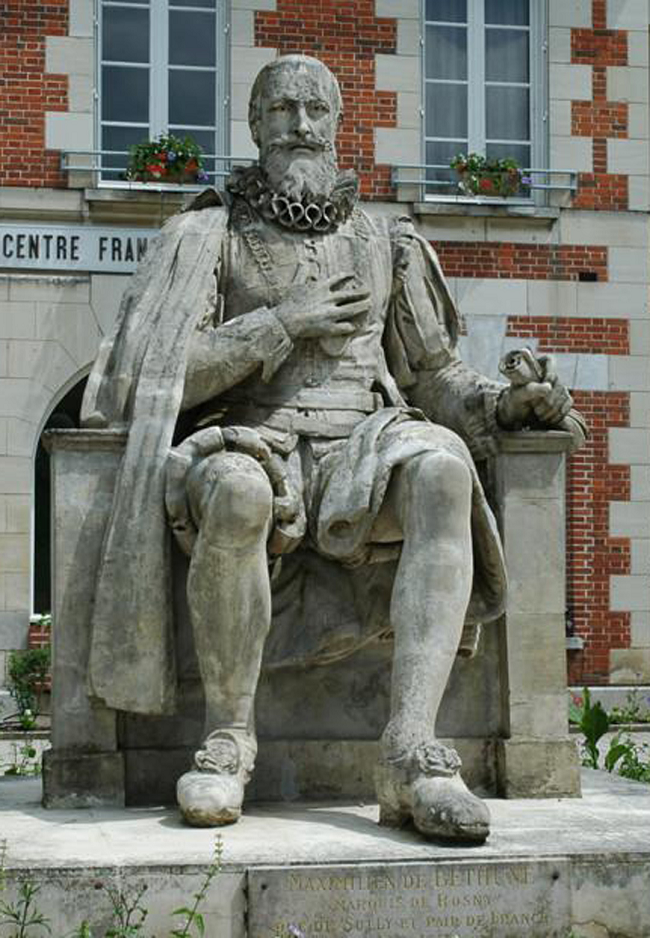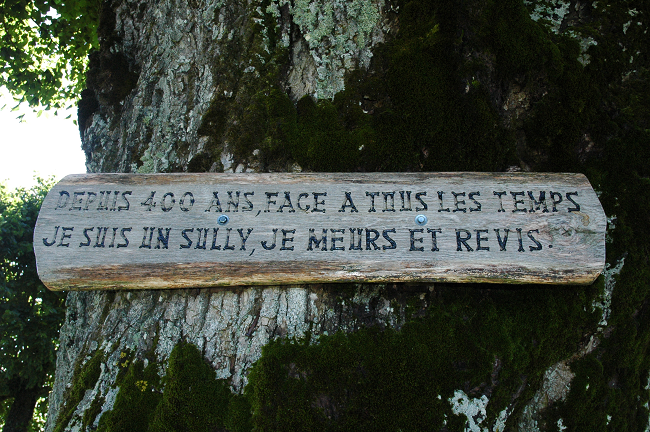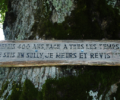Carnet de Voyage: the Sully Trees

Travel notes from the real France. Carnet de Voyage is a weekly personal travel story in France sent in by readers. If you’d like to write a story for Carnet de Voyage, head here for details on how to submit.
While camping in the Monts Lyonnais we visited the neighbouring village of Riverie. Next to the church was an old lime tree with a plaque which told its horrific story. During the Wars of Religion in the 16th century, Riverie had been a Huguenot village in a Catholic area. One day a force from nearby Lyon entered this tiny village and murdered all the men and boys. This tragedy is remembered today by a street named Rue des Morts and by the tree, planted at the suggestion of the Duke of Sully, Henri IV’s First Minister and himself a Huguenot, as a symbol of reconciliation and hope for the future. Sadly, this tree has since become diseased and had to be cut down.

Statue of the Duke of Sully in Sully-sur-Loire © Terry Brown
At the time I thought this was just an isolated example. How wrong I was! Over the years we found more and more examples of solitary trees planted on the Duke’s orders, in books, on websites, old postcards and our French contacts. Some discoveries were completely unexpected. For example, a chance mention in Wild Boy by Jill Dawson, a book written as a novel but firmly based on the true story of Victor who was discovered living wild in the Aveyron forests at the end of the 18th century, led me to contact the archivist of the National Institute for Deaf Children in Paris. She confirmed that there had been an elm tree known as Sully’s tree in their grounds. In 1903 it had also become diseased and had to be cut down.
All this set me thinking. These trees aren’t generally known about. Indeed the residents of Sully-sur-Loire (our Twin Town) assured me they didn’t exist. But did the Duke order the planting of memorial trees in communities all over France? It would certainly be in character as he was parsimonious with public money and it costs very little to plant a tree. This is, of course, folk history, remembered in the collective memories of the villagers and not written down. For that reason, we always try to speak to residents when we see a Sully tree. It’s not difficult; when local people see an English couple getting ridiculously overexcited about their tree, they are always willing to talk to us.
There are different reasons given for the trees but mostly they seem to have been planted to celebrate the Edict of Nantes (1598) which brought peace after the Wars of Religion, and to provide an alternative centre for the village which was not the church; after all, the church had been the problem. They were planted next to the church or in a local place of importance in hamlets. Most are lime trees – the lime tree is a symbol of truth, healing, renewal, justice, peace and so on. Their blossom provides a soothing, non-alcoholic drink. Many have old stone benches underneath for people to rest and chat. Plaques tell us that they did become community centres, where proclamations were read out, marriages and baptisms conducted, markets held. Even today, some village communities hold an annual picnic for residents under and around their tree.
Of course, not all trees have survived and those that have are often damaged. The church is usually on the highest part of a village and any tree planted by it is a magnet for lightning strikes. Lots of these trees have been struck by lightning, many more than once. We know now of 270 of these trees, most of which have survived, and we have visited about 150 of them. While some have been neglected by the community, many are lovingly looked after, with stakes holding up branches, rocks or concrete steadying the main trunk and metal hawsers supporting branches at risk.
I will end with a tree the significance of which is clearly understood by the community. In 1919 the people of Esse (Charente) made it part of their war memorial. A statue of a dead Poilu lies on the stone bench. A menhir has been erected against the tree and inscribed with the names of local men killed in the First World War. All is enclosed by a cromlech. This is a memorial of sadness and remembrance in the context of the long history of French people. The 1919 plaque calls it their “secular tree of peace” and that, I think, is exactly right.
Read our other Carnet de Voyage entries here
Terry Brown’s retirement pastime has involved touring France in his Dandy and penning accounts of his travels, French history, and French literature for numerous publications. Accompanied by his wife Eileen, he has stqyed at 337 French campsites scattered across all the mainland regions. Additionally, he has delivered lectures on Sully’s Trees in both France and England, contributing articles about them to various publications, including “Le Courier de la Nature,” the French magazine for the protection of nature. Find out more by visiting their website sullystrees.weebly.com
Lead photo credit : Sully tree in Prevencheres (Lozere) which has been struck by lightning © Terry Brown
Share to: Facebook Twitter LinkedIn Email
More in Carnet de Voyage, French history, French villages
By Terry Brown
Leave a reply
Your email address will not be published. Required fields are marked *









REPLY